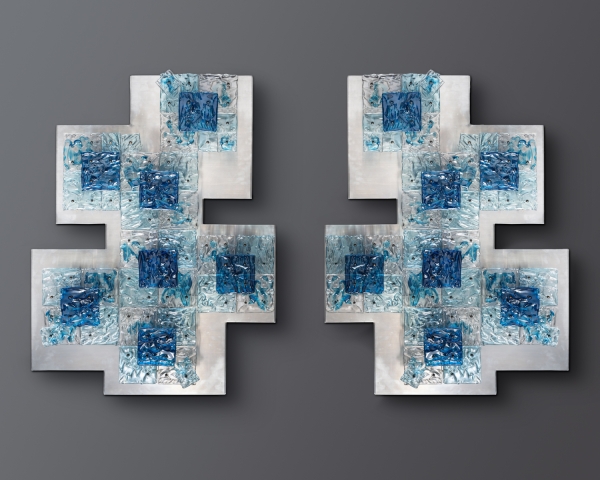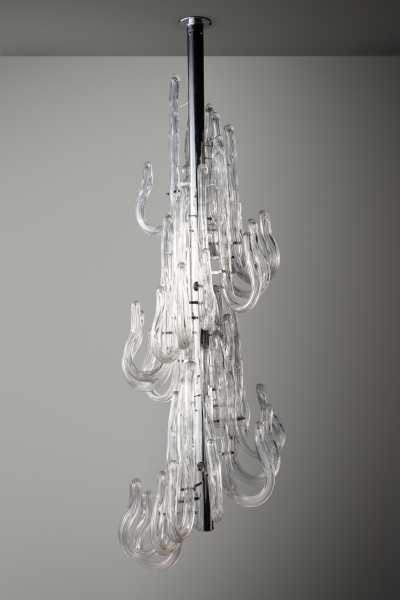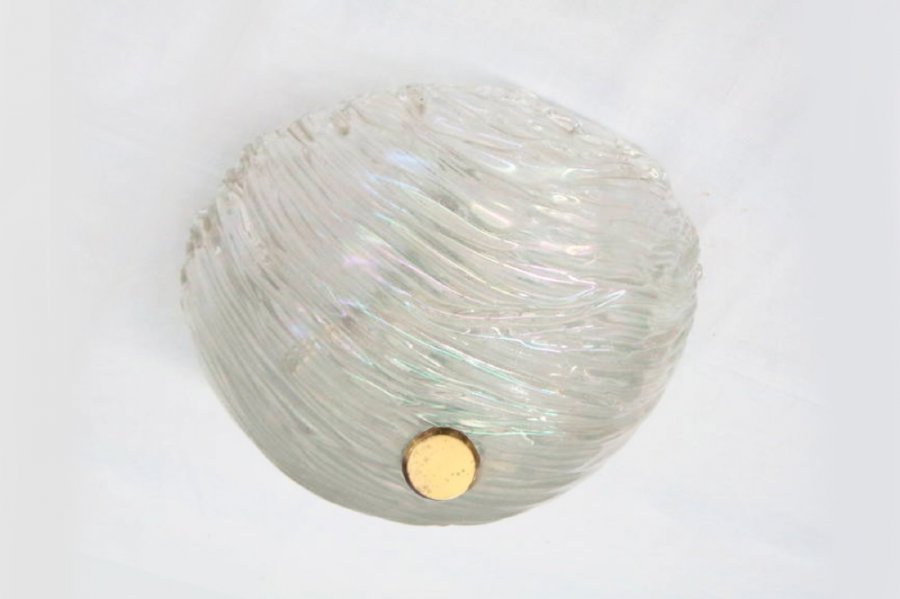Venini
During the slow modernization of the 1920s, Venini established itself as the premier glass workshop for the new age, reinscribing fragments of the past for the living present. The original Cappellin Venini & C. glass factory was a result of the collaboration between Giacomo Cappellin, an antiques dealer in Milan, and Paolo Venini, a Milanese lawyer. Initially solely concerned with the administrative side of the business, Paolo appointed the well-known painter, Vittorio Zecchin as Artistic Director. Zecchin focused on the sophisticated simplification of Art Deco, with a preference for soft lines, restrained decoration, and muted color. Despite being awarded the Grand Prix at the 1925 Exposition Universelle in Paris, Cappellin and Venini split soon after. Paolo reestablished the company as Vetri Soffiati Muranesi Venini & C, now largely relying on his own practiced eye, infalliable taste and business ability, but still appointed Napoleone Martinuzzi as Artistic Director. Two years later, Venini became one of the founding members of Il Labirinto, a group promoting the household use of the modern decorative arts whose members included Giò Ponti, Tomaso Buzzi & Pietro Chiesa. Venini put the centuries-old techniques of Murano to increasingly Modernist aims, his objects taking on a more plastic and sculptural quality highlighted by the use of “vetro pulegose” - a thick opaque glass dotted with air bubbles - or glass shot through with gold leaf. The use of heavy, opaque glass was such a profound market success that it was adopted by most all of the Murano glassworks. While Paolo ran the business and simultaneously designed entire collections, Martinuzzi sparked a veritable obsession with glass animals after releasing his renditions of animals, both real and mythological. In 1932 the architect and designer Tomaso Buzzi, a fellow Labirinto founder, took over the role of Art Diretor and had a decisive effect in modernizing the product range of Venini, solidifying its integral role in the regeneration of the applied arts. In the midst of this renewal, Carlo Scarpa was invited to collaborate with Venini in 1934. Scarpa’s fascination and preoccupation with the material qualities of light resulted in the ushering in of a “second Modern period” in Murano glass design. Scarpa and Venini enjoyed a harmonious creative relationship that would last over a decade, regularly experimenting after hours together, exploring the wealth of Murano’s past and maturing their own understandings of glass. The inevitable perpetual inventions - Battuti, Tessuti, Lacati, Variegati, Granulari etc. - elevated the quality of Venini’s production in a way that surpassed public understanding, but later heralded glass making developments of the 1950s. Fulvio Bianconi, a cartoonist and caricaturist, became Art Director in the late ’40s and produced the Fazzoletto - now emblematic of the Venini workshop - as a reinterpretation of Pietro Chiesa’s 1936 design for Fontana Arte, finished quickly by hand instead of molded. The 1950s were a period of intense activity for the workshop, marked by its exceptionally high product range and openly international character. Pietro died in 1959, but his son-in-law, Ludovico de Santillana, carried forward Venini’s commitment to collaboration, which came to distinguish the company from the rest of the island workshops. Venini is remembered as a place of unfettered innovation, encouraging artists to experiment in such a way that tradition becomes a tool, not an encumbrance.


